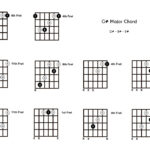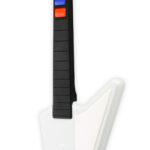The Thundertrons pickups in this Gretsch Electric Bass Guitar are truly exceptional. As someone who’s explored various bass guitars and pickup configurations, I can confidently say these are some of the most responsive I’ve encountered. They react incredibly well to different playing styles. If you favor a hard pick attack, expect a sharp, immediate response.
Personally, my playing style leans towards finger and thumb techniques, a hybrid approach developed from my upright bass experience. I rarely use a pick. My current setup on this Gretsch bass, featuring a Tru-Arc bridge and D’Addario 100-45 half-round strings, contributes to a warmer, more mellow tone. However, don’t mistake mellow for weak – I can still achieve a considerable attack and edge simply by switching to a 1 to 2mm acrylic pick when needed.
The real magic of the Gretsch 6073 lies in its scale length. Despite being technically a short scale bass at 31.5″, it genuinely feels and sounds much closer to a long scale instrument. This is largely due to the ingenious design that incorporates extra string length behind the bridge. The overall string length from the tailpiece to the tuning machines is comparable to a standard P-Bass. In fact, you absolutely must string this bass with long-scale strings; short scale strings would be far too short. This longer string length, combined with the shorter playing scale, cleverly mitigates string tension, resulting in a playing feel that is comfortably loose without being overly floppy. The sealed body construction also effectively eliminates any feedback issues, which is a significant plus for live performances and recording.
Minor Drawbacks of the Gretsch Electric Bass Guitar
While I am overwhelmingly positive about this Gretsch electric bass guitar, there are a few minor points worth noting. These aren’t deal-breakers for me, but they are areas where some players might find room for improvement or customization.
Tone Switch Capacitors
My first minor critique concerns the tone switch capacitors. They seem to be the same components used in Gretsch’s Pro-line guitars and may not be ideally voiced for bass frequencies. While I haven’t physically checked the capacitor values, the tone roll-off is quite subtle. It sounds as though they’ve implemented the standard guitar setup with a .012mf capacitor for a heavy roll-off and a .0033mf capacitor for a lighter roll-off. For bass, I believe more pronounced tone shaping could be achieved by increasing these values, perhaps to .047mf for a heavier roll-off and .022mf for a lighter one. However, this hasn’t bothered me enough to warrant a modification. Instead, for a touch more warmth, I simply roll back the master volume slightly, which effectively mellows the tone to my liking.
Stock Bridge and Tru-Arc Upgrade
My second, and more significant, issue was with the stock adjustomatic bridge. In my experience, it was frankly underwhelming. This led me to replace it with an aluminum Tru-Arc bridge, and the transformation was remarkable. With the Tru-Arc, the bass truly sings. Sustain and body are significantly improved, and intonation is now rock solid with no issues whatsoever. It’s possible I simply received a less-than-perfect stock bridge, and they may not all be this problematic, but mine was definitely a weak point. The Tru-Arc bridge was a worthwhile upgrade for this Gretsch electric bass guitar.
Lack of Thumb Rest and Tug-Bar
Finally, my last minor point is the absence of a dedicated thumb rest and a tug-bar (the G-string side “thumb” rest). Typically, I use the E-string side of the neck pickup or the end of the fretboard as a thumb rest, which works perfectly well for my playing style. However, some bassists may prefer the additional clearance and defined anchor point that a separate thumb rest provides. I’ve considered adding both a thumb rest and a tug-bar, but I’ve found I can play comfortably without them. However, if you frequently play funk styles that involve a lot of popping and slapping, these additions might be considered essential upgrades to personalize your Gretsch electric bass guitar.
Conclusion: A Highly Recommended Gretsch Electric Bass Guitar
Despite these minor points, my overall experience with this Gretsch electric bass guitar has been overwhelmingly positive. I’ve even had several professional bass players try mine, and they’ve consistently praised its setup and sound. One die-hard J-bass player was particularly impressed, repeatedly raving about the tone.
For amplification, I typically use a modern Ampeg 2×10 Portaflex 500 for larger venues and a Genz-Benz Shuttle 3.0 for smaller gigs. However, occasionally I bring out my vintage Kustom K250 paired with an old 15″ Bassman cabinet, and the sound is absolutely earth-shattering. If you’re looking for a versatile, great-sounding, and uniquely designed electric bass guitar, the Gretsch Thundertron equipped model is definitely worth serious consideration. It offers a fantastic blend of vintage aesthetics and modern playability, making it a standout instrument in the world of electric basses.


